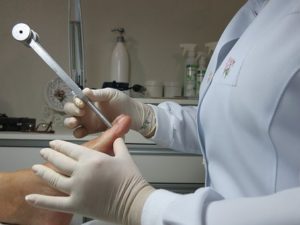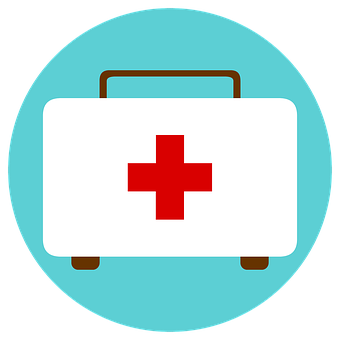Shadowing health professionals gives you direct exposure to people working in careers you might pursue. You get to watch them doing what you might do someday and to see how health care delivery works in the US. It is valuable to shadow health care providers in other countries. Health professional programs in the US, however, want to know that you have shadowed providers in US hospitals and clinics, because they train you to serve in these settings.
I have found it valuable to observe the interactions between hospital staff and between staff and patients. Seeing how all of these parts of the surgery process come together to form one cohesive unit has been very interesting.
Katie Schleck, UW '17
This is an accordion element with a series of buttons that open and close related content panels.
Is shadowing required?
Shadowing is highly recommended. Some health professions programs — e.g., physical and occupational therapy — require observation hours. All health professional programs highly value shadowing experiences in applications to their schools.
How do I find a healthcare professional to shadow?
Below is more information on the shadowing policies for specific hospitals and clinics:
- UW Hospital & American Family Children’s Hospital: Visit the Non-Physician Observer Request/Job Shadowing page and follow the instructions. You can use the UW Health website to find providers to serve as sponsors.
- Meriter Unity Point Health: Visit the Volunteering, Internships and Shadowing page and contact the appropriate fieldwork coordinator.
- Dean Clinics: There is no formal process for applying to shadow at Dean clinics. Students are expected to contact providers individually in order to arrange shadowing opportunities.
How can I grow my shadowing network?
This is a key part of shadowing — always ask each person you shadow to connect you with another provider in a different clinic or a different hospital department. The goal in shadowing is breadth of exposure — both in terms of department and type of provider, especially if you are exploring or your interest is in becoming a physician, a PA, or an NP.
How should I ask them?
Many health care professionals are happy to talk to students, but they want to know why you want to talk to them.
- Make sure to clearly express why you want to shadow this person specifically—maybe someone recommended them or they work in a specific field that interests you.
- Tell them a little bit about yourself—where you go to school, any healthcare or research experience, and your professional goals. Always be courteous and respectful.
- If they say “no,” don’t take it personally. Health professionals are busy and they may be saying no for reasons beyond their control. Don’t get discouraged; you will eventually get a “yes” if you stick with it.
Click here for a template to use when drafting an e-mail to a professional to about shadowing opportunities.
How long should I shadow?
You should first find out what the health care professional is comfortable with or what has worked well for this person in the past. Shadowing opportunities range from a day to a few hours per week for several weeks or months. Remember that the goal is breadth of exposure. You might shadow each person you shadow one time. Always ask if they will connect you with someone else in another clinic or hospital department — or a different type of provide in the same clinic or hospital, if you are interested in becoming a physician, a PA, or an NP.
What are some things to keep in mind while I shadow?
- Each hospital and clinic might have specific expectations for shadowing in their facility. Be sure to familiarize yourself with their rules and expectations prior to your shadowing experience.
- Dress professionally and comfortably.
- You can feel free to ask questions and take notes in between patients, not in front of them. Prepare questions ahead of time—see our informational interview page for ideas.
- The health care professional is required to introduce you as a pre-health student to each patient. There may be patients who are uncomfortable having you in the room during an exam or appointment, so you may be asked to step out. Other patients might engage you in conversation. Regardless of your level of interaction with the patient, it’s important that you keep all patient information private.
- Be sure that you have transportation to the shadowing site. Use the Metro Transit website to plan your trip if you do not own a car. The following bus routes will get you to or within a short walking distance to the local hospitals:
- UW Hospital/American Family Children’s Hospital/William S. Middleton Memorial Veteran’s Hospital: 1, 2, 10, 11, 15, 28, 37, 38, 44, 48, 56, 57, 70, 71, 80, 84, W1, W3
- Meriter Hospital: 4, 5, 6, 7, 13, 27, 47, 48, 82, W1, W3, W5, W7, X06
- St. Mary’s Hospital: 4, 5, 13, 44, 47, 48, 75, W5, W7, X04
What should I do after I shadow?
Write thank you notes to show your gratitude. If you feel you had a great experience, ask the healthcare professional that you shadowed if you can keep in touch. (If you maintain the relationship, you might be able to ask for a letter of recommendation in the future.) Make time to write a reflection about what you learned through shadowing and also keep track of dates, amount of shadowing hours, and contact information, which will come in handy when you are applying to health professions programs.

